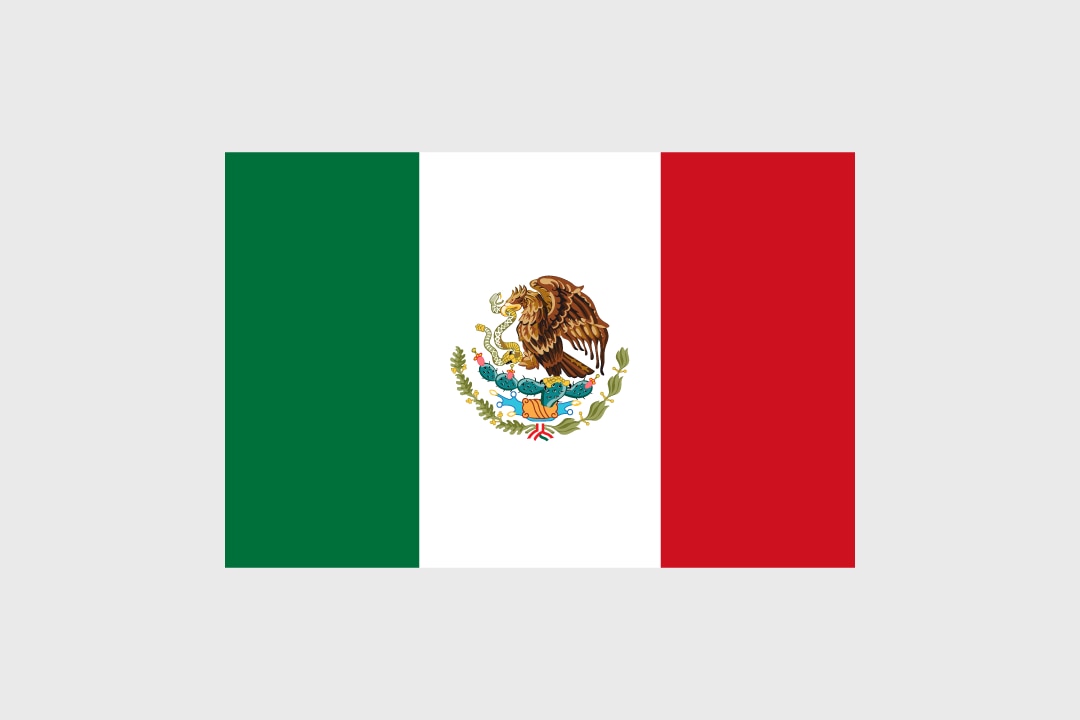Economics and markets
Stretched dollar, equities boost diversification case
June 25, 2025
The long game: Tariffs shape the next era of global investing
Commentary by Roger Aliaga-Díaz, Chief Economist, Americas, and Global Head of Portfolio Construction, and Kevin Khang, Senior International Economist
Key points
- Tariffs usher in and accelerate longer-term trends across the global economy.
- The era of sound money—the persistence of positive real interest rates—remains well supported by short- and long-term forces.
- The case for global diversification is strengthening, even with the prospect of transformative artificial intelligence (AI).
“Tariffs will not only impact the global economy this year but also set longer-term changes in motion.”
Vanguard Chief Economist, Americas, and Global Head of Portfolio Construction
Three themes are worth emphasizing as we reach the midpoint of 2025: 1) tariffs are likely to produce both an unmistakable signal and unremitting noise for the global economy, 2) interest rates above the rate of inflation are here to stay, and 3) the case for global diversification is strengthening. We emphasize these themes even amid recent heightened geopolitical tensions.
1. Tariff developments could muddy the waters and hasten trends
Tariffs have been tapped to a much larger extent as a policy tool than we had anticipated at the start of the year. Our 2025 economic outlook put supply-side forces and their potential stagflationary effects —downward pressure on growth and upward pressure on prices—at the center of our short-term economic assessments. Meanwhile, high policy uncertainty and the anticipation of slowing global trade have accelerated imports and fostered inventory buildup ahead of tariff announcements. This dynamic adaptation is clouding macroeconomic data, necessitating care in distinguishing signal from noise. Thanks to the substantial frontloading of imports in the U.S. during the first quarter, the realized effective tariff rate, which is the average-weighted tariff actually paid by importers, has remained well under 10% so far. However, tariff frontloading and policy uncertainty will eventually subside, and we do expect the effective tariff rate to climb to around 13% by the end of 2025.
Tariff rates hold the key for our economic outlook
Notes: The figure shows the estimated impact of effective tariff rates on our 2025 year-end forecasts for U.S. GDP growth and inflation as of three different points in time: at the beginning of 2025, currently, and when tariffs were announced in early April. These estimates hold all other drivers constant and assume that the effective tariff rate will remain in effect throughout 2025.
Source: Vanguard calculations, as of June 13, 2025.
Yet tariffs and related global policy discussions may prove to be a catalyst for longer-term trends. For example, the European Union’s commitment to increase defense spending could boost the region’s economy for the next few years and become a kernel of homegrown productivity in the longer term. In China, efforts to shift from an export- and investment-driven economy to a consumer-driven economy will be crucial. And in the U.S., a spotlight is being shined anew on the importance of fiscal discipline. Whether via tariffs, growth, or any other means, the U.S. needs to put its fiscal deficit back on a sustainable path.
2. Higher interest rates are here to stay
As we discussed in our 2025 outlook, the era of sound money continues. This means the neutral rate—the theoretical rate that keeps the supply and demand of capital in balance—is far higher than it was pre-pandemic. Inflation is expected to remain above the Federal Reserve’s 2% target in the short term. However, of more enduring relevance is the U.S. fiscal deficit. At 6%–7% of GDP, it is historically high for a peacetime and nonrecessionary environment. Worse yet, the deficit picture is likely to deteriorate over time given aging demographics. If left unchecked, those persistent deficits become a source of excess demand and inflationary pressures. However, if the Federal Reserve is to remain committed to its price stability goal, then we’re likely entering a period of persistently higher real interest rates. The bond market has taken note of this tension, demanding greater compensation for risk. The term “bond vigilantes” may become more commonplace going forward.
With yields on corporate bonds within the 5%–6% range—a level not seen since before the 2008 global financial crisis—two significant observations are worth highlighting for investors. First, spreads have remained surprisingly compressed through the policy turmoil, and they’ll likely stay rangebound absent an unforeseen event, or tail risk. Second, bond investors may need to adjust their mindset from the pre-COVID-19 era, when bond holdings appreciated due to declining rates. In the years ahead, the source of return is more likely to be collecting a healthy level of interest income and reinvesting it at a high rate.
3. The case for global diversification is strengthening
Our 2025 outlook noted a continued equity market dichotomy: A handful of firms (representing the “new economy”) that grow earnings around 20% year-over-year and whose valuations are stretched, while the rest (representing the “old economy”), in the U.S. and abroad, have less impressive earnings growth and more reasonable valuations. This tension has persisted even following a volatility spike in the first half of the year that 1) exposed the vulnerability of high valuations and 2) demonstrated U.S.-based tech firms’ continuing ability to generate earnings growth against this backdrop.
Beyond valuations, two additional considerations strengthen the case for a globally diversified portfolio. First, even if AI transforms the economy (and this is the essence of current valuations), the history of technology-based transformations suggests that the benefits of such advancement accrue beyond those companies that lay down the infrastructure. The next winners in the AI race could be those value companies that benefit from the technology breakthroughs, as opposed to the growth companies that created the technology in the first place. From a historical perspective, railroads in the 19th century and technology, media, and telecommunications companies in the 1990s provide some of the most salient examples of this concept.
Second, in the last 15 years, U.S. equities and the U.S. dollar have moved in lockstep, with both outpacing their international counterparts—a double whammy for global diversification. But that has left both U.S. equities and the U.S. dollar overvalued relative to a broad range of fair-value estimates. In addition to the enduring strategic case for global portfolio diversification, the expected weakening of the home currency paired with higher expected returns on international investments make the case for global rebalancing of portfolios even more compelling now.
Markets validate the case for global diversification
A strategy of global diversification has certainly served equity investors well this year. Global equities have outperformed U.S. equities, whose valuations remain stretched. That outcome aligns with our guidance at the start of the year in the Vanguard Economic and Market Outlook for 2025: Beyond the Landing, where our time-varying allocation tilted toward ex-U.S. equities.
As midyear 2025 approaches, we highlight the key drivers of investment performance so far this year and what investors may expect in the months ahead.
A weaker dollar has benefited diversified U.S. investors
The figures below show how major equity markets have performed this year and highlight the impact of a weakening U.S. dollar, a trend we’ve been expecting to see for some time. Initially undervalued at the beginning of the last decade, the U.S. dollar subsequently gained strength as capital inflows into U.S. equity markets increased. The outperformance of U.S. equities attracted further capital, bolstering the U.S. dollar and driving U.S. equity prices higher. Having lost around 8% since its recent peak at the end of 2024, however, the U.S. dollar is now at its cheapest levels since 2022.
The dollar’s decline this year has certainly benefited U.S. investors. In fact, cumulative returns in local currencies significantly lag their equivalent in U.S. dollars. For example, the EURO STOXX 50 Index has returned 9.4% year-to-date in euros compared with a much more robust 22.0% in U.S. dollars.
Equity market performance in U.S. dollars and local currencies

Notes: Total return index series rebased at 100 on December 31, 2024. Regional returns are based on the Standard & Poor’s 500 Index for the United States, the EURO STOXX 50 Index for Europe, the FTSE 100 Index for the United Kingdom, the Nikkei 225 Index for Japan, and the MSCI Emerging Markets Index for emerging markets. Local currency series refer to performance reported in euros, British pounds, and Japanese yen, respectively. The solid lines in the charts represent performance in U.S. dollars, and the dashed lines represent performance in local currency.
Sources: Vanguard calculations, using data from Bloomberg as of June 23, 2025.
Past performance is no guarantee of future returns. The performance of an index is not an exact representation of any particular investment, as you cannot invest directly in an index.
Equity markets: The end of U.S. leadership?
Until late March, equity markets across regions were telling different stories. For U.S.-dollar investors, European equities had risen 12.5% and U.K. equities were 9.4% higher. Emerging markets equities were up a more subdued 3.0%. U.S equities struggled, posting a decline of 4.3%, and Japanese equities were down 5.5%. After initial optimism about the prospect of further deregulation and tax cuts, U.S. investors started to worry about higher interest rates and expensive valuations, leading them to look elsewhere for both diversification and yield.
Then on April 2, the U.S. announced an array of tariffs on its trading partners. Equity markets tumbled, registering their largest decline since the 2020 COVID-19 crash.
Since then, global equity markets have demonstrated resilience, with the MSCI All Country World Index up 6.9% year-to-date. The S&P 500 has recovered as well. It’s now in positive territory thanks to resilient corporate earnings, although its gains have been significantly less than those of other regions. European stocks have been the undisputed winners, with a return of 22.0% for U.S.-dollar investors. The outperformance can be attributed to several factors: attractive valuations, a more dovish central bank policy path, and a stimulative German fiscal package.
Bond markets: Navigating high yields and fiscal pressures
Bond markets have faced some headwinds from yields rising amid concerns over fiscal sustainability. Projected annual U.S. deficits in the range of 6%–7% of GDP (with an increasing share of the deficit being used to cover debt-servicing costs) have raised concerns among investors about long-term sustainability. Meanwhile, 10-year Eurobond yields are at 2.51%, up from 2.36% in early January but lower than when they spiked in March following Germany’s announcement of a defense spending package. In the U.K., the 10-year gilt yield reached 4.85% early this year, its highest level since 2008, driven by inflation concerns and increased government borrowing.
Over the longer term, we foresee rates remaining above the level of inflation in much of the world. This makes bonds an attractive asset class for long-term investors, who may nonetheless need to become accustomed to reaping returns from reinvesting interest payments at higher rates rather than from price appreciation.
Asset allocation and the road ahead
The equity risk premium in the U.S. is now close to zero, a level seen only twice in the past 70 years. Stocks are more expensive compared with bonds than they have been in nearly 25 years. And credit spreads are compressed. The European investment-grade spread is at 0.97%, whereas the U.S. investment-grade spread is at 0.86%. With yields in the U.S. significantly higher than in the euro area, the marginal premium for getting credit exposure—especially through U.S. corporates—might seem like a risky venture.
While global financial markets have shown resilience in 2025, the picture is far from homogenous. Market volatility remains elevated, exacerbated by recent geopolitical events.
Today more than ever, diversification is not just a free lunch. It is the option least likely to cause indigestion.
– Giulio Renzi-Ricci, Vanguard Head of Portfolio Construction, Europe
Navigating growth, inflation, and trade challenges
Although uncertainty remains around U.S. tariff policy, we’re likely to see modest economic growth and further rate cuts by a number of major central banks in the second half of 2025. However, geopolitical events bear watching.
Notes:
All investing is subject to risk, including the possible loss of the money you invest. Be aware that fluctuations in the financial markets and other factors may cause declines in the value of your account. There is no guarantee that any particular asset allocation or mix of funds will meet your investment objectives or provide you with a given level of income. Diversification does not ensure a profit or protect against a loss.
Bond funds are subject to the risk that an issuer will fail to make payments on time, and that bond prices will decline because of rising interest rates or negative perceptions of an issuer’s ability to make payments.
Investments in stocks or bonds issued by non-U.S. companies are subject to risks including country/regional risk, which is the chance that political upheaval, financial troubles, or natural disasters will adversely affect the value of securities issued by companies in foreign countries or regions; and currency risk, which is the chance that the value of a foreign investment, measured in U.S. dollars, will decrease because of unfavorable changes in currency exchange rates.








